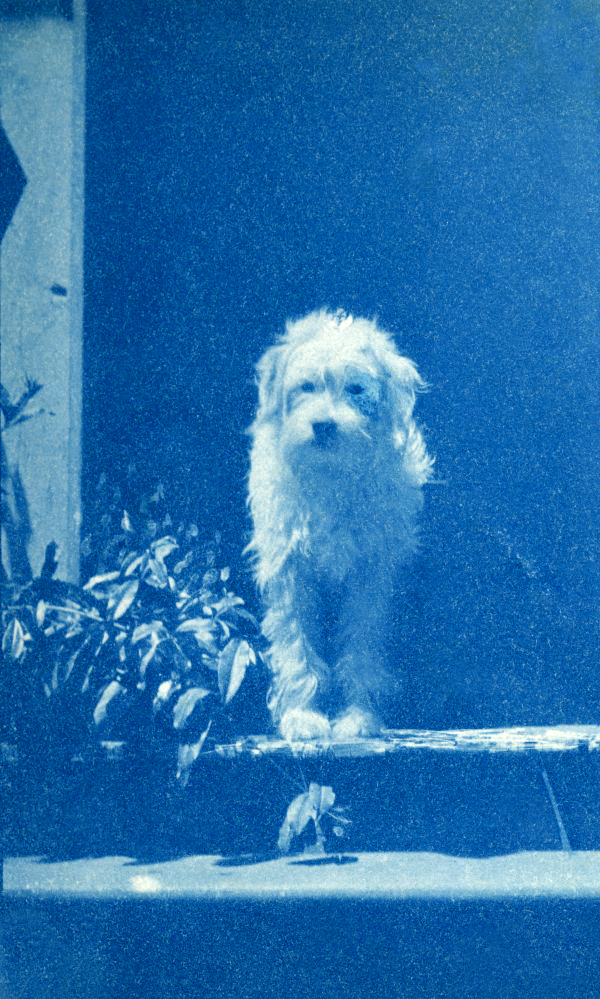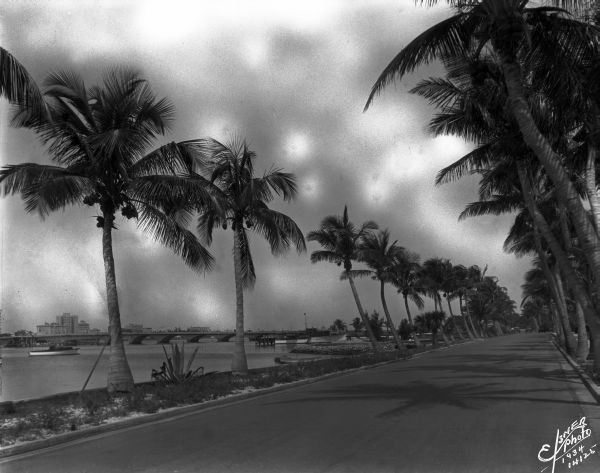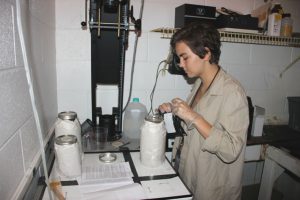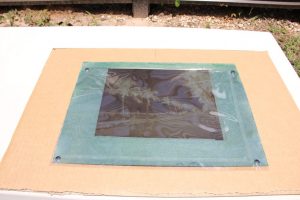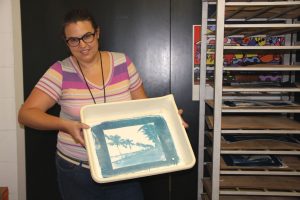Description of previous item
Description of next item
Out of the Blue!: The Ins-and-Outs of Cyanotype Printing
Published August 8, 2016 by Florida Memory
In April 2016, a 1920s-era scrapbook of portraits of the Bridge family of Dade City was accessioned into the State Archives. This scrapbook was unusual in two ways: first, it heavily features pets as the subjects of its photographs; second, nearly all of the prints are cyanotypes—prints created through an early photographic process, characterized by their brilliant Prussian blue hue.
The deep, cool tones of cyanotype photography are particularly refreshing to viewers coping with Florida’s summer heat. But, as it turns out, Florida’s summertime UV rays are ideal for the exposure of cyanotype prints! Inspired by the unique and beautiful prints preserved in the Bridge family scrapbook, we decided to research the history behind this unusual photographic process and even learned how to create our own cyanotypes.
A Brief History of Cyanotype Photography
English astronomer John Herschel first discovered the chemical process of cyanotype printing in 1842, when he coated paper with iron salts before exposing them to light to create an image. Herschel used the technique to copy his scientific notes through contact printing—laying objects onto sensitized paper to create an image. The process later became a popular method for copying architectural plans or “blueprints.” Additionally, botanist Anna Atkins applied this same process in creating photograms of algae. Released in 1843, Atkins’s British Algae: Cyanotype Impressions, debuted as the first-ever publication illustrated with photographs. Atkins is also credited as being the first woman to create a photograph.
The cyanotype process was infrequently used until the 1880s, when photographers turned to cyanotype printing as a quick and inexpensive way to proof their negatives. Commercially available, pre-sensitized cyanotype sheets became available in 1872, and by the early 20th century were used to produce cyanotypes at home.
Though pre-sensitized cyanotype sheets are still commercially available today, we elected to mix the solution, sensitize the paper, and create a contact print using a large-format negative from the Archives. The method we chose is similar to how photographers may have proofed their own negatives in 1870.
The Process
First, we selected a large-format black and white negative with simple, clean imagery, little detail, and with a good scale of dark, light and mid-tones, in the hopes that this negative would produce a clear cyanotype image. Given these parameters, we selected William Elsner’s 1934 photograph of a palm-lined road in Florida.
Then, we set out on mixing the sensitizer, with a kit purchased online. The sensitizer is produced by mixing equal parts of two solutions: Solution A (a mix of 100g ferric ammonium citrate with 500 ml water) and Solution B (40g potassium ferricyanide with 500ml water). The solutions are mixed in jars that have been covered in paper, to keep them out of the light.
After mixing the solutions in the darkroom, we painted the resulting sensitizer onto watercolor paper, a heavier stock of paper that would stand up well to rinsing the prints later.
To protect the negative from the sensitized paper, we enclosed the negative in clear mylar–the same material used to protect many historical documents in the Archives. After the sensitized paper dried, we tacked the encapsulated negative onto the sensitized paper, and allowed the print to sit in direct sunlight for ten minutes.
As the sunlight exposed the image onto the paper, the sensitized area of the paper turned from light yellow to a deep emerald green. Once the ten minute exposure time elapsed, we took the print inside for washing. After washing the print for five minutes in softly running water, the color transformed into the Prussian blue hue characteristic of cyanotype prints.
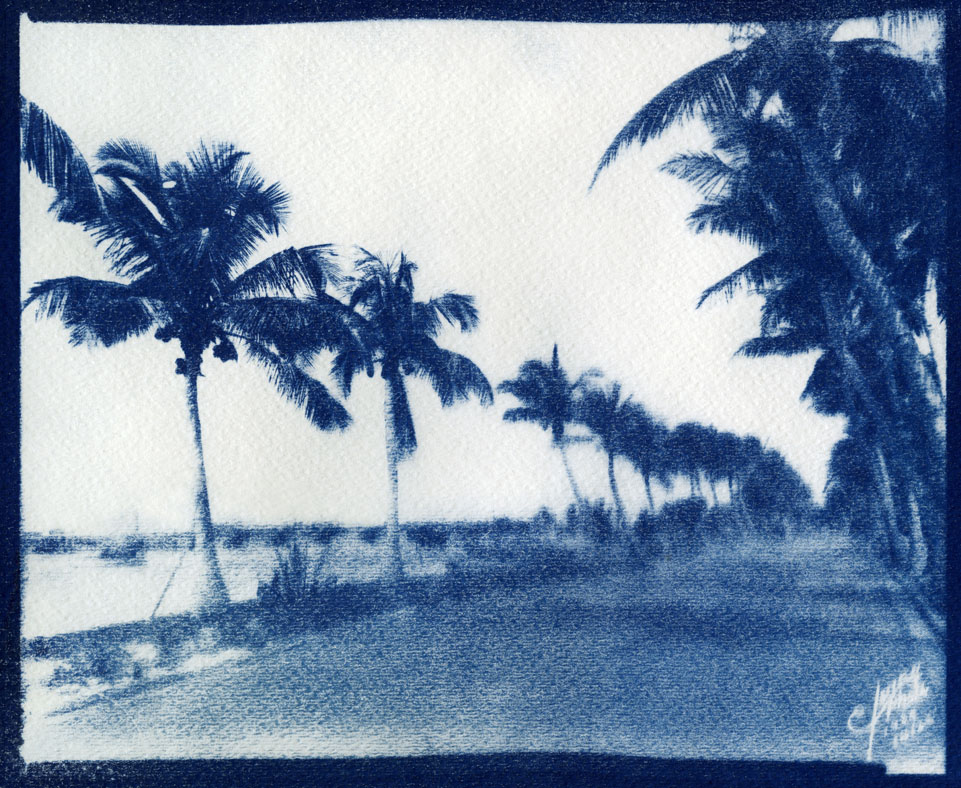
The final print.
For more information about historic photographic processes, check out our exhibit, Daguerreotype to Digital, which covers the history of photography from 1839 to the present era.
Cite This Article
Chicago Manual of Style
(17th Edition)Florida Memory. "Out of the Blue!: The Ins-and-Outs of Cyanotype Printing." Floridiana, 2016. https://www.floridamemory.com/items/show/321954.
MLA
(9th Edition)Florida Memory. "Out of the Blue!: The Ins-and-Outs of Cyanotype Printing." Floridiana, 2016, https://www.floridamemory.com/items/show/321954. Accessed December 29, 2025.
APA
(7th Edition)Florida Memory. (2016, August 8). Out of the Blue!: The Ins-and-Outs of Cyanotype Printing. Floridiana. Retrieved from https://www.floridamemory.com/items/show/321954

 Listen: The World Program
Listen: The World Program
